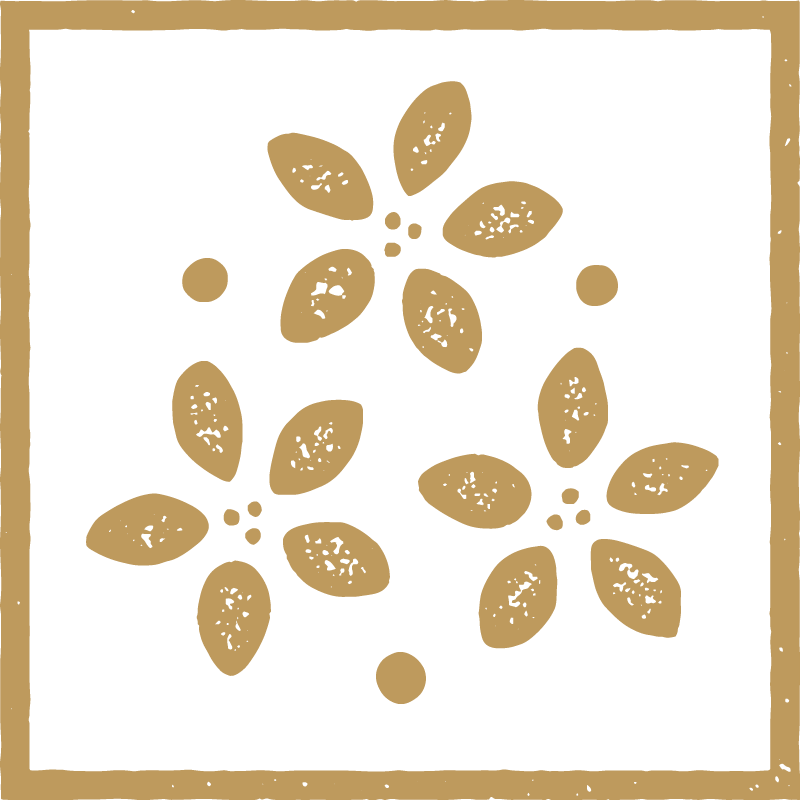I'll have an order of Springtime
by Ouita Michel
Salad
Piled like a nest,
sprouted seeds, red oak
lettuce and baby beans
cut on the diagonal,
poured
over, gold oil slurried
with fresh lime, sprinkled
with pumpkin seeds, thick
shards of Romano
and cracked pepper.
Like a doe
who has wandered
from the sage flats
into a high, wet meadow,
I chew lovingly.
— Pam Sexton
My mother was a poet. For as long as I can remember, we had green salad at dinner. It was my job from about the age of 7 until I was 50 and she was too sick to eat her beloved salads, to clean the greens and chop the vegetables. Our family joked and teased her about adding too many vegetables; she wasn’t satisfied until the lettuces were mixed with peppers, tomatoes, cucumbers, beans, radishes, onions, carrots, broccoli stems, anything and everything in her fridge. Mom and I agreed that salad was a litmus test for restaurants — if it was tired and dry, without thought, tenderness, freshness or beauty, then the restaurant was not for us. When the Holly Hill opened, she wrote me the poem Salad and her friend Susan Brown penned it beautifully. It hangs over Table 31, in the room to the right of the Holly Hill foyer, a quiet memory for me and a reminder of what is good and beautiful in my cooking, what to aspire to. Salad remains, after 30 years, my personal obsession and the tender mélange of greens David Wagoner brings us from his Three Springs Farm made my mother’s heart and palate sing. I nag our cooks to pile the Bibb lettuce leaves cup side up, to arrange the little leaves as a bouquet, to toss lightly and use just the right amount of dressing.
You can tell if you’re eating at a chain restaurant by the quality of the vegetables. Usually, in a chain the lettuce is romaine or bagged “spring” mix, ever present no matter what the season. The vegetable side dishes — zucchini and pepper medleys in winter, or my favorite, the ever-present Caprese salad in Kentucky’s January. Caprese salad is a decidedly seasonal dish, and best in late summer here when our tomatoes are second to none, but it lives on year round in unchanging chain restaurant menus. The crunchy pale tomato is a reminder of what’s wrong with our food system.
When I started as a chef in Central Kentucky, I wanted to get the best I could find for my customers, and found it right where we live. The quality of what Kentucky farmers grow is superlative. Locally raised vegetables tasted, looked and felt better than anything else I could buy. As I matured as a chef, I realized that buying from neighboring farmers, farmers who became my friends, made a financial difference to them. Over time I found a mission to increase farm income in Central Kentucky.
Using ingredients grown in Kentucky ties us to our agricultural community and in so doing ties us to our food culture. Eating greens, tomatoes and any number of foods grown here, ties us to our landscape, our soils, our water and our air. It ties us to each other. It ties us to our poetry and pottery, our paintings, our past and our immediate present.
What does Kentucky taste like? In spring it tastes like fresh asparagus, mint and new lettuces still so soft that a touch can bruise. Spring tastes like the first green onions dipped in salt, the spicy crunch of radish, strawberries and in a great while, black raspberries. In summer it tastes of buttery sweet corn, green beans and new potatoes, sliced tomatoes, zucchini coins, peaches and watermelon, basil and huckleberries. In fall it tastes of butternut, acorn and Hubbard squashes, pecan pie, slow-cooked kale and collard greens, cabbage, fried green tomatoes and pink lady apples. In winter it tastes of hickory nuts and sorghum, hoecakes, grits, brown beans and chow chow, sweet potatoes, plum preserves and a long sip of bourbon.
It is my aim and my hope, and my longtime pursuit, that you can taste Kentucky in each of our restaurants.


